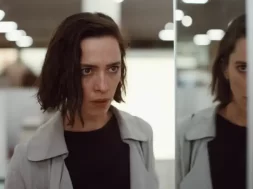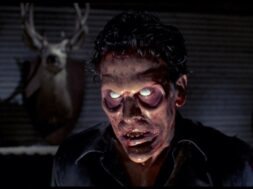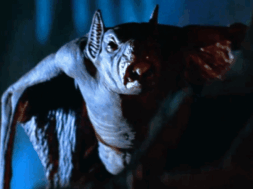Does anyone even remember we’re in a new decade? Feels weird to say since it seems like we’re living several years in the span of a few months and, being completely honest with ourselves, 2020 waved the white flag. We get it. A once in a lifetime pandemic tends to have that effect. With that in mind, what will horror look like for the next ten years? Historically, it takes a while for a decade of horror to truly define itself, something often determined by real-world events. Saw and Hostel didn’t drop until 2004 and 2005, respectively, but became the epitome of early 2000s horror. Before that, ‘90s horror didn’t find its voice until 1996 with Scream.
Scream, which turns 25 next year, famously outlined the rules for surviving a horror flick. What was true then is still true today: you pay for your transgressions no matter how big or small. Characters walk into rooms they shouldn’t, open doors that should stay closed, and play around with forces beyond their control just for a couple of laughs. And every time, without fail, something bad happens. Horror films reinforce our cause and effect belief system, giving us a bit of a false sense of comfort when the final body drops. But living through a pandemic changes every single rule. Many are suffering due to no fault of their own, and there’s no plan coming and no hero ready to burst through the door to save the day.
The 2020s should explore what it means to be helpless. How it feels to follow the rules and get nothing but an icy embrace in return.
Once again, horror needs to look inward, examine the rules, and rewrite them. How does that look in some of the most famous subgenres of the last decade? Glad you asked.
We’re in the age of small gatherings only consisting of friends and family; people we trust with our lives because we believe they value their own. Plus, those are the rules. Since pandemics have a way of making you think twice when that doorbell rings, the external threat of the bad guys in home invasion movies like You’re Next or The Strangers would have no appeal. Instead, the internal threat from anyone in those small gatherings becomes the new fear. There’s no need for forced entry because we willingly let them inside when they come rapping at our door, greeting us with a smile and the warmth of familiarity.
Or worse, the tormentor could be a family member who lives under the same roof as the main character(s) and wants nothing more than to see them suffer. The movie becomes a metaphor for what we’re going through and makes our safe spaces anything but. It speaks to the fact that a virus can live in our loved ones and we never really know how safe we are. But ultimately, it’s a lot scarier knowing the people we trust with our lives can just as easily decide we’re as disposable as a napkin.
Perhaps no other subgenre is more of a slave to its rules than found footage flicks. Safe to say we now have a little more empathy for the annoying person who won’t drop the camera. We’re all trying to make sense of the world in any way we can, and for the most part, that means sharing our madness with others. To say nothing of it being the only way some of us can communicate with the outside world. Because of all of that, plus the fact TikTok and Instagram are now essentially appendages, a found footage movie in 2023 will have a completely different subtext than one from 2016.
The scariest thing about these movies, besides whatever is doing the haunting, should be that the refusal to film and share is what will get these characters killed. No matter what happens, no matter how bad it is, no matter how ridiculous and absurd the situation gets, they must keep rolling. The movie itself demands they keep going, the entity wants all that attention, and the characters can’t live without feeding the beast. We, the audience, demand the cameras stay on as well. Our societal pressures to share and create content gave birth to new rules. If it’s not on social media, then it didn’t happen at all. If you say you were terrorized by a demon and didn’t stream it for the world to see, then you’re probably lying.
We’re told if we follow the rules and do the things we’re supposed to do to be thought of as good, upstanding citizens, those charged with protecting us will do so. The Crazies and any of the 100 or so Purge movies refute that idea by portraying government as women and men who magically appear whenever trouble arises. Monster on their block? Here come the suits. When an experiment goes wrong and affects an entire town? Suits send in the military. Sky-high crime rate? Suits implement legal murder and thin the herd. Pandemic? Well, they at least try.
But our reality is the flip side of that dynamic. Corruption is worse when combined with incompetence. The people in charge have no clue how to fix anything and don’t even know where to start.
This decade should deal with the scariness of ineptitude. Instead of seeing suits and military fatigues when that monster comes, characters get nothing. When a bomb is misplaced or a chemical experiment goes south, not even containment is an option because there are no options.
Being abandoned sucks. Being abandoned because the person or people in charge can’t handle the problem sucks even more. There is a specific trauma that event elicits; it’s one horror rarely explores but certainly should. That stress can result in people hurting themselves, hurting the ones around them, drowning in despair, or an entire society living out scenes from The Shining. These films can examine our relationship with institutions meant to protect us and what it’s like watching a group of people slowly descend into nihilism all because they followed the rules and were completely misled.
2020 is the year a particular brand of scary movie broke the fourth wall. How can we ever go back to the typical ghosts, goblins, and strangers at our door? We know what lurks around the corner, which doors not to open, how many seconds it takes for that jump scare, and where that apparition will pop up. To paraphrase the tagline of an underrated entry in the Scream series, it’s a new decade, and it’s time for new rules.











